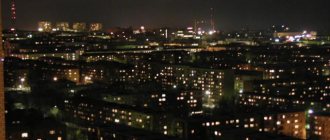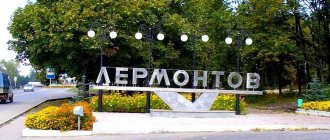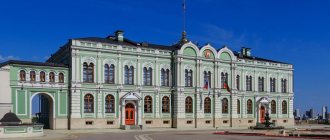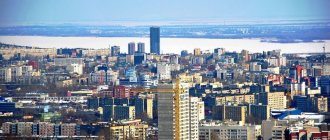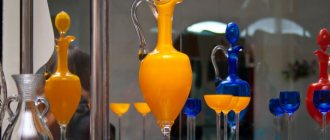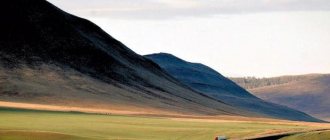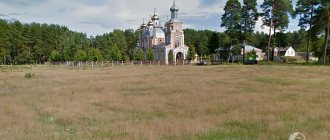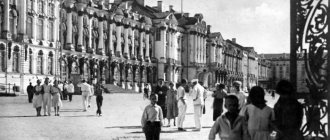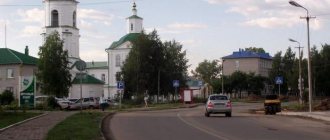Izhevsk is the recognized capital of Russian small arms. The city became famous thanks to the master inventor Mikhail Kalashnikov. The models of machines he created are considered the best in the world. Military equipment and weapons have become the hallmark of the city.
Izhevsk enterprises also produce high-quality steel, automobile and motorcycle equipment, radio components and communication systems. The city is one of the largest industrial centers in Russia. In addition, it serves as the capital of the Udmurt Republic.
Location
Tourists who do not know the administrative structure of Russia well may ask the question in which region Izhevsk is located. In fact, the city, home to almost 700 thousand people, is the capital of Udmurtia. To answer the question of inquisitive travelers, where is Izhevsk, it is worth taking a look at the capital of Tatarstan, well known to tourists. Approximately 275 km separate the main city of Udmurtia from Kazan.
Izhevsk is located in a picturesque place between the Kama and Vyatka - two rivers flowing through the territory of European Russia. The distance from Izhevsk to the Russian capital is 1193 km, if you travel by road. A trip by car from Moscow lasts at least 14 hours. Motorists will be interested to know the distances from the Udmurt capital to nearby cities:
- Naberezhnye Chelny – 190 km;
- Neftekamsk – 130 km;
- Perm – 280 km;
- Kazan – 380 km.
Age composition of the population
The population of Izhevsk is on average younger than the country as a whole. Younger age groups account for 15.8% of the total number of residents, and older people account for 20%. There are 64.2% people of working age in the city. This may be due to low life expectancy - on average it is 64.2 years. According to this indicator, Izhevsk is in 43rd place among the regions of the Russian Federation.
Men live especially short lives - on average only 57 years. The life expectancy of women is significantly longer - up to 71 years. This means that the majority of men in Izhevsk do not live to see retirement at all. On average, per 1 thousand inhabitants, 9.3 people are born and 12.1 people die.
Geography
The territory in which Izhevsk is located is a flat area with low hills scattered across it. The capital of Udmurtia stretches for 27.4 km from south to north and 17.4 km from east to west. On the territory of Izhevsk – 315.5 sq. km – three cities such as Tver or Tula can fit. The capital of Udmurtia is approximately 6.5 times smaller than Moscow.
Izh, a tributary of the Kama, divides Izhevsk into two almost equal parts. The city lives according to Samara time, which is one hour ahead of Moscow. The capital of Udmurtia includes 5 urban districts. Its location in the Volga region has a beneficial effect on the economic development of the city. The republic, of which Izhevsk became the capital in 1934, borders on four constituent entities of the Russian Federation:
- with the Perm region;
- Tatarstan;
- Kirov region;
- Bashkortostan
Factors that positively influence the demographic situation in Izhevsk
As mentioned above, the population of the city of Izhevsk has been steadily growing in the last four cities. This growth, of course, is not as impressive as that observed in the second half of the 1980s, but after constant negative indicators for 20 years since 1993, this trend looks very encouraging. The main factors that influenced such a drastic change in the situation are as follows.
Firstly, there is a significant increase in the birth rate. It is connected both with natural processes (the generation of the 80s began to give birth) and with the efforts of the state (maternity capital, regional housing programs for young families).
Secondly, the number of people entering the city constantly exceeds the number of residents leaving it.
Finally, thirdly, the economic stability that established in the region in the 2000s also played an important role in the positive dynamics of population growth.
Climate and nature
Izhevsk is a green city, surrounded by meadows and dense mixed forests. The climate of the city, like that of the entire republic, is characterized as temperate continental. Winter is characterized by severe frosts. Summer is short and warm. Air temperature indicators at night and during the day depend on the specific month:
- January: – 14.2; – 11.8;
- February: – 13.3; – 9.3;
- March: – 7.9; – 3.0;
- April: + 1.1; + 5.6;
- May: + 9.6; + 17.6;
- June: + 13.8; + 21.9;
- July: + 15.3; + 25.4;
- August: + 14.0; + 23.8;
- September: + 8.7; + 15.4;
- October: + 1.6; + 5.0;
- November: – 4.5; – 2.5;
- December: – 10.2; – 8.5.
The first number in the list is the average temperature at night, the second is the average temperature during the day. It rains more often in the summer months, in April and September. The most sunny days are in May and summer. Calm weather is typical for July.
The city's flora is represented by 1,700 plant species. In Izhevsk and its suburbs you can see Siberian fir, Finnish spruce, bird cherry, larches, cedars and other trees and shrubs. The local forests, groves and meadows are inhabited by golden eagles, foxes, wood grouse, badgers, eagle owls, black storks, martens, orioles, moose, hawk owls and other animals and birds.
In addition to Izh, 12 rivers flow through the city. In the north-west of the Udmurt capital there is Izhevsky Pond, stretching for 11.6 km. Width – from 788 m to 2.56 km. In the south of Izhevsk there are two more small ponds: Pirogovsky and Sepychevsky.
Geographical features
The city is located in the east of the East European Plain, on the territory between the Vyatka and Kama rivers. The distance to Moscow is 1198 km. The climate in the city is continental, with frosty winters and short warm summers. The average annual temperature is +3 °C. It is significantly warmer in Izhevsk than outside the city. The terrain is hilly, but low in places.
Short story
On the territory of Izhevsk, archaeologists have discovered traces of ancient settlements, the age of which is estimated at 1800 years. From 1438 to 1552, the land on which the capital of Udmurtia later appeared belonged to the Kazan Khanate. After the capture of Kazan by the troops of Ivan IV in 1552, the Udmurt region became part of Russia. The further history of Izhevsk is marked by several fateful events:
- from 1582, the territory where the city appeared much later belonged to the Tatar volost;
- in 1734, iron ore deposits were discovered here;
- April 1760 - construction of the Izhevsk plant and the village around the enterprise began;
- 1763 – construction of a dam on the Izh River and the formation of the Izhevsk pond;
- 1774 - the plant was looted by rebels under the leadership of E. Pugachev;
- 1807 – the founding of an arms factory took place;
- XIX century - rapid development of production;
- February 1918 - the village received city status and began to be called Izhevsk;
- December 1934 - the city was given the status of the capital of an autonomous republic;
- 1940–1988 – a period of rapid development of industry in the city and expansion of its territory; 17 nearby towns and villages were annexed to Izhevsk;
- September 2010 – ceremonial events were held in the capital of Udmurtia on the occasion of the 250th anniversary of the city.
Now Izhevsk is a large industrial center, home to over 90 nationalities. The largest peoples in number are Russians (69%), Tatars (9%) and Udmurts (15%).
Map
| Izhevsk: maps |
Izhevsk: photo from space (Google Maps) Izhevsk: photo from space (Microsoft Virtual Earth)
| Izhevsk Nearest cities. Distances in km. on the map (in brackets along roads) + direction. Using the hyperlink in the distance , you can get the route (information courtesy of the AutoTransInfo website) | |||
| 1 | Hohryaks | 9 () | NE |
| 2 | Zavyalovo | 11 (14) | SE |
| 3 | Malaya Purga | 35 (32) | YU |
| 4 | Yakshur-Bodya | 36 (45) | WITH |
| 5 | Agryz | 39 (36) | YU |
| 6 | New | 49 () | IN |
| 7 | Votkinsk | 52 (59) | NE |
| 8 | Kiyasovo | 55 (64) | YU |
| 9 | Sarapul | 55 (66) | SE |
| 10 | Chaikovsky | 56 (96) | IN |
| 11 | Sigaevo | 59 (73) | SE |
| 12 | Sharkan | 63 (88) | NE |
| 13 | Uva | 64 (101) | Z |
| 14 | Mozhga | 75 (87) | SW |
| 15 | A game | 76 (99) | WITH |
| 16 | Vavozh | 79 (133) | Z |
| 17 | Selty | 82 (141) | NW |
| 18 | Alnashi | 86 (125) | SW |
| 19 | Kambarka | 88 (95) | SE |
| 20 | Debuses | 95 (144) | WITH |
| 21 | Karakulino | 97 (122) | YU |
| 22 | Amzya (Republic of Bashkortostan) | 98 (152) | SE |
| 23 | Nikolo-Beryozovka (Republic of Bashkortostan) | 99 (120) | SE |
| 24 | Syumsi | 101 (170) | Z |
| 25 | Krasnogorskoe | 104 (145) | NW |
| 26 | Elovo (Perm region) | 105 (176) | IN |
| 27 | Neftekamsk | 106 (128) | SE |
| 28 | Agidel | 114 (168) | YU |
| 29 | Grahovo | 117 (164) | SW |
| 30 | Frequent (Perm region) | 117 (168) | NE |
a brief description of
Located on the river. Izh, 40 km from its confluence with the Kama, 1129 km from Moscow. Railway junction lines and highways.
Territory (sq. km): 316
Information about the city of Izhevsk on the Russian Wikipedia site
Historical sketch
In 1760, Count P.I. Shuvalov on the river. An ironworks was founded in Izh, around which the village of Izhevsky Plant grew.
In 1774 it was occupied by the troops of Emelyan Pugachev and was badly destroyed.
In 1807, on the basis of the ironworks, an arms factory was also created, which in 1809 was transferred to the military department. From the middle of the 19th century. Here and at 4 private factories, the production of a variety of hunting weapons began. In the 19th - early 20th centuries. The Izhevsk plant was one of the largest arms factories in Russia. During the First World War, the production of weapons reached 2000 guns per day (mainly three-line rifles of the Mosin system).
In 1918, the village of Izhevsky Plant was transformed into the city of Izhevsk, in Udmurt Izhkar (kar “city”) - “city on the Izh River”. Since 1921 the center of the Votsk Autonomous Region, since 1932 - of the Udmurt Autonomous Region. Since 1934 the capital of the Udmurt Autonomous Soviet Socialist Republic, since 1990 - the Udmurt Republic.
In 1985-87 was called Ustinov after the name of the Soviet party and statesman D.F. Ustinova (1908-1983).
In 1934 it was divided into 3 districts: Azinsky, Oktyabrsky, Pastukhovsky. In 1937, the Oktyabrsky district was renamed Zhdanovsky. In 1945, Oktyabrsky and Pervomaisky districts were additionally formed. In 1952, Oktyabrsky and Pervomaisky districts were abolished. In 1960, Azinsky, Zhdanovsky and Pastukhovsky districts were abolished. On May 23, 1962, Leninsky, Oktyabrsky and Pervomaisky districts were formed on the territory of Izhevsk. On February 1, 1963, the Industrial District of the city was formed.
Municipal indicators
| Index | 1990 | 1999 | 2001 | 2003 | 2005 |
| Demography | |||||
| Number of births, per 1000 population | 14.6 | 9.1 | 9.8 | 11.3 | 10.8 |
| Number of deaths, per 1000 population | 8.3 | 11.1 | 12.7 | 14 | 13.7 |
| Natural increase (decrease), per 1000 population | 6.3 | -2 | -2.9 | -2.7 | -2.9 |
| Standard of living of the population and social sphere | |||||
| Average monthly nominal accrued wages, rub. | 0.309 | 1372.8 | 3183.9 | 5235.6 | 7702.9 |
| Average housing area per inhabitant (at the end of the year), sq.m. | 14.5 | 16.9 | 17.3 | 17.8 | 18 |
| Number of preschool institutions, pcs. | 293 | 224 | 217 | 218 | 218 |
| Number of children in preschool institutions, thousand people | 50.9 | 29.1 | 28.6 | 29.3 | 31.1 |
| Enrollment of children in preschool educational institutions (at the end of the year), as a percentage of the number of children of the corresponding age, % | 83.5 | 82.4 | |||
| Number of daytime educational institutions (at the beginning of the school year), pcs. | 86 | 100 | 104 | 110 | 108 |
| Number of students in daytime educational institutions, thousand people | 88.8 | 93 | 85.4 | 74.5 | 64.3 |
| Number of doctors, people. | 4445 | 6159 | 3451 | 6063 | 6144 |
| Number of nursing staff, people. | 7944 | 9777 | 5965 | 9424 | 9269 |
| Number of hospital institutions, pcs. | 38 | 37 | 24 | 37 | 38 |
| Number of hospital beds, thousand units | 10.3 | 10 | 4.9 | 9.8 | 9.1 |
| Number of medical outpatient clinics, pcs. | 9 | 8 | 17 | 44 | 64 |
| Capacity of medical outpatient clinics, visits per shift, thousand units. | 16.5 | 16.4 | 14.1 | 16.1 | 18.7 |
| Number of registered crimes, pcs. | 13458 | 13117 | 15772 | 26527 | |
| Persons who committed crimes were identified, persons. | 6738 | 5831 | 3630 | 4345 | |
| Economy, industry | |||||
| Number of enterprises and organizations (at the end of the year), pcs. | 14972 | 18076 | 20847 | 23987 | |
| Number of operating enterprises by type of activity: mining (at the end of the year), pcs. | 0 | ||||
| Number of operating enterprises by type of activity: manufacturing (at the end of the year), pcs. | 430 | ||||
| Number of operating enterprises by type of activity production and distribution of electricity, gas and water (at the end of the year), pcs. | 179 | ||||
| Volume of shipped goods of own production by type of mining (in actual prices), million rubles. | 0 | ||||
| Volume of shipped goods of own production by type of manufacturing (in actual prices), million rubles. | 37440 | ||||
| Volume of shipped goods of own production by type of production and distribution of electricity, gas and water (in actual current prices), million rubles. | 9473.6 | ||||
| Construction | |||||
| Volume of work performed by type of activity “Construction” (until 2004 - volume of work performed under construction contracts), million rubles. | 1044.8 | 5040.4 | 6633.2 | 5676.2 | |
| Commissioning of residential buildings, thousand sq.m. of total area | 339.4 | 42.4 | 83.2 | 103.2 | 152.3 |
| Commissioning of residential buildings, apartments | 521 | 907 | 1197 | 1656 | |
| Commissioning of preschool institutions, places | 560 | 0 | 0 | 0 | 0 |
| Commissioning of educational institutions, places | 3930 | 0 | 0 | 0 | 0 |
| Commissioning of hospital facilities, beds | 300 | 74 | 0 | 0 | 0 |
| Commissioning of outpatient clinics, visits per shift | 1050 | 0 | 150 | 36 | |
| Transport | |||||
| Number of bus routes (in intracity traffic), pcs. | 34 | 28 | 28 | 31 | 30 |
| Number of tram routes, pcs. | 12 | 12 | 12 | 12 | 12 |
| Length of operational tram tracks (at the end of the year), km | 33.4 | 33.3 | 33.3 | ||
| Number of trolleybus routes, pcs. | 9 | 10 | 11 | 11 | 11 |
| Length of operational trolleybus lines (at the end of the year), km | 45.8 | 53.2 | 53.2 | ||
| Number of passengers transported by buses per year (in intracity traffic), million people. | 154.5 | 153.3 | 152.8 | 152 | 142.2 |
| Number of passengers transported by trams per year, million people. | 143.8 | 100.1 | 110.7 | 104.7 | 77.2 |
| Number of passengers transported by trolleybuses per year, million people. | 99.5 | 105 | 130.5 | 128.1 | 97.7 |
| Connection | |||||
| Number of telephone sets of the city public telephone network, thousand units. | 126.8 | 177 | 183.9 | 198.7 | 220.1 |
| Number of residential telephone sets of the city public telephone network, thousand units. | 145.9 | 152.4 | 164.5 | 183.2 | |
| Number of payphones of the city telephone network (including universal ones), pcs. | 1213 | 1239 | |||
| Trade and services to the population | |||||
| Retail trade turnover (in actual prices), million rubles. | 5964.8 | 10849.4 | 14734.1 | 21874.8 | |
| Retail trade turnover (in actual prices), per capita, rub. | 9119 | 16699 | 23395 | 35199 | |
| Index of physical volume of retail trade turnover, % compared to the previous year | 104.1 | 113.6 | |||
| Index of physical volume of public catering turnover, % compared to the previous year | 93.3 | 109.2 | |||
| Number of stores, pavilions (at the end of the year), pcs. | 214 | 237 | |||
| Sales area of shops, pavilions (at the end of the year), sq.m. | 42920.2 | 39194.1 | |||
| Volume of paid services to the population (in actual prices), million rubles. | 0.224 | 1941 | 4216 | 7798.1 | 11452.8 |
| Volume of paid services to the population (in actual prices), per capita, rub. | 0.3 | 2967 | 6489 | 12382 | 18428 |
| Volume of household services to the population (in actual prices), million rubles. | 0.061 | 351.6 | 552.5 | 722 | 1076.5 |
| Volume of household services to the population (in actual prices), per capita, rub. | 0.095 | 537.6 | 850.4 | 1146 | 1732 |
| Investments | |||||
| Investments in fixed assets (in actual prices), million rubles. | 0.533 | 4233 | 9216 | 9137.4 | 11790.6 |
| Share of investments in fixed assets financed from budgetary funds in the total volume of investments, % | 11 | 15 | 27 | 21 | |
Data sources:
- Regions of Russia. Main characteristics of the constituent entities of the Russian Federation: statistical collection. Goskomstat of Russia. - M:, 2003.
- Regions of Russia. Basic socio-economic indicators of cities. Statistical collection. Rosstat. - M:, 2005. p. 219
- Transport in Russia: Statistical collection. Goskomstat. - M:, 2003. pp. 110, 112, 120, 122
- Transport in Russia: Statistical collection. Rosstat. - M:, 2005. pp. 117, 119, 127, 129
- Regions of Russia. Basic socio-economic indicators of cities. 2006. Statistical collection. Rosstat. - M:, 2006. p. 219
Culture, science, education
Udmurt State University. Medical Academy. Mechanical, agricultural institutes.
Theatres: Russian and Udmurt drama, musical, puppet theaters. Circus.
Museums: local history, fine arts.
Architecture, sights
Izhevsk is located on gentle hills, bordered by forest on the north and west. The Izh River with the Izhevsk Pond divides the city into 2 parts - Zarechnaya (industrial) and Nagornaya (residential areas; eastern, elevated part).
Since 1808, Izhevsk was built up according to a regular plan (architect S.E. Dudin and others). The main building of the ironworks (1809-44, architect Dudin), Arsenal (1823-25, architect Dudin and A.P. Belyaninov), Alexander Nevsky Cathedral (1820-23, architect L. Ruska), etc.
In the old city center, 1-2-story wooden houses with carved platbands and stone buildings in the classicist style have been preserved.
According to the master plan of 1961, an administrative and cultural center was created in the Nagorny part. In the 1970-80s. Housing construction was carried out mainly in the northeast of the city.
| Population by year (thousands of inhabitants) | |||||||
| 1897 | 21.5 | 1970 | 422.4 | 2000 | 652.8 | 2013 | 632.9 |
| 1923 | 51.9 | 1973 | 473 | 2001 | 650.7 | 2014 | 637.3 |
| 1926 | 62.3 | 1976 | 511 | 2003 | 632.1 | 2015 | 642.0 |
| 1931 | 98.2 | 1979 | 548.7 | 2005 | 623.4 | 2016 | 643.5 |
| 1934 | 120.0 | 1982 | 587 | 2006 | 619.5 | 2017 | 646.3 |
| 1939 | 175.6 | 1986 | 620 | 2007 | 615.7 | 2018 | 648.2 |
| 1956 | 252 | 1989 | 635.1 | 2008 | 613.3 | 2019 | 648.9 |
| 1959 | 285.3 | 1992 | 650.7 | 2010 | 610.6 | 2020 | 648.1 |
| 1962 | 322 | 1996 | 654.5 | 2011 | 627.7 | 2021 | 646.5 |
| 1967 | 376 | 1998 | 654.5 | 2012 | 629.5 | ||
The city's attractions
The capital of Udmurtia surprises with its wide variety and number of objects of interest to city guests. For art connoisseurs and history connoisseurs, the doors of 72 galleries and museums are open in Izhevsk. The city has 13 sacred buildings - chapels, cathedrals and churches - and more than 150 monuments.
The embankment is named after Semyon Dudin, a famous Udmurt architect
Guests of Izhevsk, like local residents, enjoy strolling along the 1300-meter embankment, named after Semyon Dudin, a famous Udmurt architect. According to the architect’s designs, 6 high-status buildings and 12 houses were built in the city, including the Alexander Nevsky Church, one of the buildings of the arms factory and the Trinity Church.
Since 2007, K. Marx Street has been decorated with the 67-meter red brick building of St. Michael's Cathedral. A staircase consisting of 300 steps leads to the entrance to the temple. The five gilded onion-shaped domes are clearly visible from different parts of the city. The building was built on the site of an old church, which was erected in 1915 and demolished in 1937.
About 800 m separate St. Michael's Cathedral from another famous sacred building in the city. The building of the Alexander Nevsky Church, decorated on the outside with 18 powerful columns, was built in the style of Russian classicism, characteristic of St. Petersburg and European capitals. The cathedral was built in 1823. Visitors to the temple see a building restored in 1993.
Among the cultural institutions of the city, the National Museum, whose halls are located in the building of the Izhevsk Arsenal, is of greatest interest to tourists. More than 66 thousand historically valuable items are collected here. Visitors show particular interest in the collection of ancient weapons, household items of the peoples of Udmurtia and the bones of ancient animals that lived in the vicinity of Izhevsk.
“Ludorvay” – ethnographic museum-reserve
Approximately 17 km from the capital of the republic stretch the “possessions” of “Ludorvaya” - an ethnographic museum-reserve occupying an area of 59 hectares. Coming here, guests seem to find themselves in Udmurtia as it was 100–150 years ago. Visitors stroll among ancient manors, barns, windmills, barns and wooden houses. 23 buildings are collected here, with the help of which the appearance of an Udmurt village of the late 19th and early 20th centuries is recreated.
Sex and age structure
The population of Izhevsk can be considered as a kind of cross-section, giving an idea of the gender and age structure of the population throughout Russia. Thus, according to data at the beginning of this year, the total number of men in the city is just over forty percent, while the percentage of women is close to sixty.
The picture is not very happy if we look at the age structure of the city’s population. Despite the fact that in recent years the number of both men and women, albeit not at a very high rate, has been growing, the percentage of the working-age population in the overall structure of residents of this urban population has continued to decline. Moreover, this trend is likely to continue in the coming years. The thing is that people born in the 1950s and 1960s are gradually retiring, but very few are replacing them. This is due to the difficult situation in the country in the 1990s, when there was a real demographic crisis.
Entertainment in Izhevsk
Guests of the city will not have to suffer in search of varied leisure activities. In Izhevsk, visitors are welcomed by 19 theaters, 136 restaurants, 65 entertainment centers, 60 night clubs, 432 cafes, 18 cinemas, 9 concert halls and 160 bars. Among the variety of leisure places, guests of the Udmurt capital most often choose four most interesting objects:
- “Networks”, a skate park in Izhevsk located on University Square, was opened quite recently, in October 2021, but managed to quickly gain popularity among the capital’s youth. For extreme sports enthusiasts, there is a bicycle track made of counterslopes, bumps and holes, as well as four grounds: for training, a basketball court and two for skateboarding.
- Fans of dramatic art can visit two theaters whose productions are distinguished by high artistic skill: the National and the Russian. In the first of them, productions are mainly based on plays by Udmurt authors: R. Nikolaeva, I. Gavrilov, E. Zagrebin, A. Blinov, A. Grigoriev and others. The repertoire of the Russian Drama Theater includes 25 performances based on the works of a variety of authors, ranging from W. Shakespeare and A. Ostrovsky to I. Vyrypaev and L. Zorin.
- Fans of musical art happily fill the halls of the Opera and Ballet Theater and the Philharmonic. The latter institution attracts primarily with concerts of symphonic music, which feature works by P. Tchaikovsky, J. Brahms, N. Rimsky-Korsakov and other famous composers. The Opera and Ballet Theater delights audiences not only with classical works, but also with modern musicals.
- On August 18, 2021, a new park appeared on an abandoned plot of land surrounded by Northern Lane and the buildings of the City Administration, Rostelecom and the Supreme Court. The compact “Open Garden,” as this picturesque place was called, occupies an area of just over 8 thousand square meters. m. On the territory of the park there are benches, a cozy gazebo, an indoor stage and a spacious area for communication. Festivals, games, concerts by local musicians, lectures and competitions are held here.
“Forest Fairy Tale” – camp and recreation center
Young guests of Izhevsk can relax with their parents outside the city. About 19 km from the outskirts of the Udmurt capital, on the territory of the Botanical Garden, there is a “Forest Fairy Tale” - a camp and recreation center. This is a whole health complex, consisting of 6 buildings and located on an area of 28 hectares. Young guests of the camp will enjoy fun games, interactive quests, educational quizzes and competitions.
Tourists and city residents of all ages enjoy visiting the local zoo, built on the banks of Izhevsky Pond in 2008. 483 animals and birds live here in open enclosures. The most exotic “residents” of the zoo:
- Amur tiger;
- blue-tailed monitor lizard;
- Far Eastern leopard;
- Yemen chameleon;
- polar bear;
- flamingo;
- dwarf pig;
- black Wolf;
- jaguar;
- gibbon;
- alpaca;
- Japanese crane.
Quality of life of the population
Izhevsk is far from the most prosperous city in the Russian Federation. Despite the large number of educational centers (4 higher educational institutions, 100 schools, many technical schools, colleges, vocational schools, a large number of private institutions), the city has an unfavorable social situation.
The collapse of the USSR, during which the quality of life was also very low, hit the city residents hard. Most of the enterprises were bankrupt and looted, despite the fact that this was the only place of income for the residents of Izhevsk. Employment fell sharply.
At the same time, the alcohol industry developed, causing drunkenness to spread rapidly. Now this is a big problem for the city. Local authorities are trying to somehow improve the situation by organizing various entertainment events. Unfavorable living conditions and high levels of alcoholism affect the residents of Izhevsk, making many people embittered and gloomy.
How to get to Izhevsk?
For those who prefer to travel to the Udmurt capital by train, it is important to know that in Moscow passenger trains depart from the Kazansky railway station. Travel time – from 16 hours 43 minutes. until 20:50 Trains arrive in Izhevsk at a modern station located on the street. Druzhba, 16. In the neighboring building (house 18) there is a post office (index - 426 960) and a sorting shop.
Planes depart to Izhevsk from three capital airports: Vnukovo, Sheremetyevo or Domodedovo. Travel time without transfers is from 1 hour 35 minutes. up to 2 hours 05 minutes In Izhevsk, the airport is located 16 km from the central quarters of the city. Tourists get to hotels by taxi or bus No. 331.
Events
The central square of Izhevsk is a favorite place for walks and recreation for citizens. All major festive and special events, fairs, concerts, exhibitions, and folk festivals are organized and held here. For example, on the day of the city of Izhevsk, the following performers gave concerts on the Central Square: Alexander Buinov, Sergey Lazarev, Ivanushki International, Larisa Dolina, Kristina Orbakaite, Igor Nikolaev, Valery Syutkin, the Na-Na group, Oleg Gazmanov, Dima Bilan , Nikolai Baskov, “Bricks”, “Kalinov Bridge” and others.
Various political events, such as demonstrations, rallies, and pickets, are organized and held on the square. Various festivals take place here. For example, the blacksmith art festival gave the city many sculptures that today decorate the square and streets of the city. The sculpture from this festival “Scientist Cat” decorated the square on Pushkinskaya Street and became a favorite object of citizens and guests of the city.
In summer, there are children's attractions on the square for children, you can ride on cars and slides. In winter, a central Christmas tree is installed here and an ice town is built.
